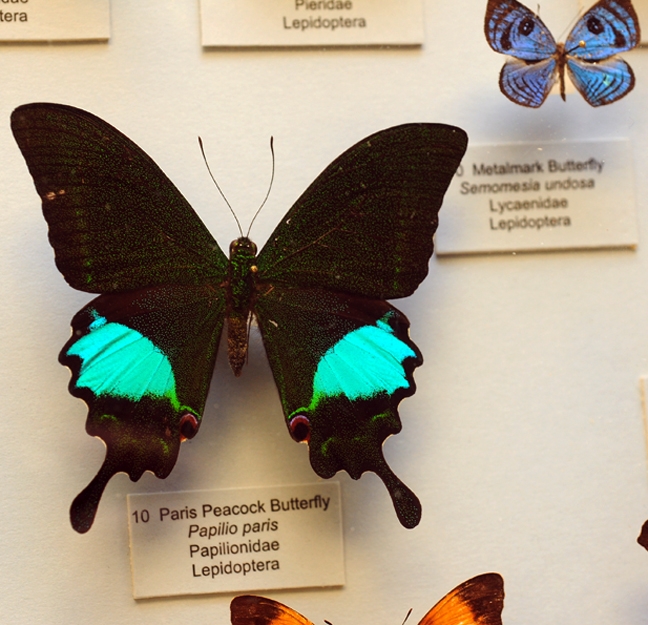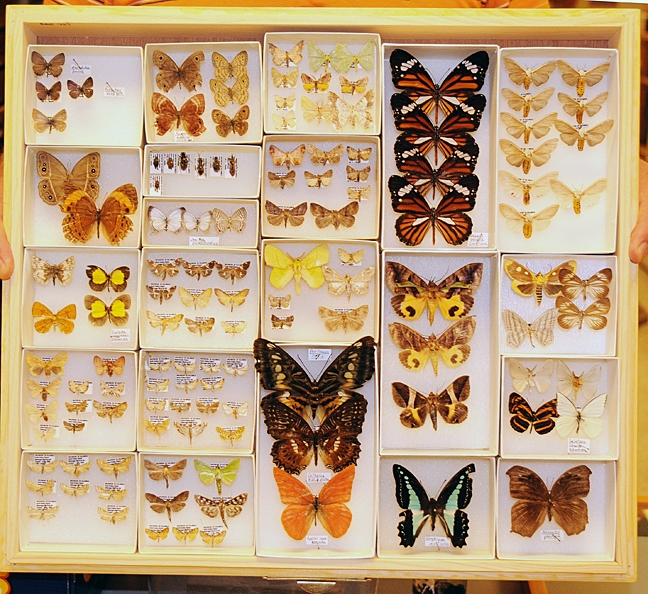
Butterflies draw smiles instead of scowls, pleasure instead of pain, glee instead of grief.
So, here's Part 1 of the good news. You still have a chance to win the Beer-for-a-Butterfly contest. No one has come forth in the three-county area of Sacramento, Yolo and Solano to deliver the first cabbage white butterfly of the new year to Art Shapiro, distinguished professor of evolution and ecology at the University of California, Davis. If you collect the first one of 2015 and you're the verified winner, you'll receive a pitcher of beer or its equivalent.
Shapiro, who usually wins his own Beer-for-a-Butterfly contest, hasn't found one either. Every day has amounted to a "No Fly Day" and a "No Beer Day."
Reports are surfacing that the cabbage whites (Pieris rapae) are flying in Santa Rosa, but unfortunately (or fortunately, depending on your perspective), Santa Rosa is in Sonoma County, not in Sacramento, Yolo or Solano counties.
Shapiro has sponsored the annual contest since 1972. It's all part of his four-decade study of climate and butterfly seasonality. “It is typically one of the first butterflies to emerge in late winter. Since 1972, the first flight has varied from Jan. 1 to Feb. 22, averaging about Jan. 20." Shapiro says his long-term studies of butterfly life cycles and climate "are especially important to help us understand biological responses to climate change. The cabbage white is now emerging a week or so earlier on average than it did 30 years ago here."
Shapiro, who is in the field more than 200 days a year, knows where and when to look. In fact, he's been defeated only three times since 1972, and all by his graduate students. Adam Porter defeated him in 1983; and Sherri Graves and Rick VanBuskirk each won in the late 1990s.
In 2014, Shapiro netted the winning butterfly at 12:20 p.m. Tuesday, Jan. 14 in West Sacramento, Yolo County. It ranked as "the fifth or sixth earliest since 1972.
The contest rules include:
- It must be an adult (no caterpillars or pupae) and be captured outdoors.
- It must be brought in alive to the department office, 2320 Storer Hall, UC Davis, during work hours, 8 a.m. to 5 p.m., Monday through Friday, with the full data (exact time, date and location of the capture) and your name, address, phone number and/or e-mail. The receptionist will certify that it is alive and refrigerate it. (If you collect it on a weekend or holiday, keep it in a refrigerator; do not freeze. A few days in the fridge will not harm it.)
- Shapiro is the sole judge.
Part 2 of the good news about butterflies: a mid-winter gathering of Northern California Lepidopterists and the Bohart Museum of Entomology will take place at an open house from 10 a.m. to 4 p.m., Saturday, Jan. 31 in the Bohart Museum, located in Room 1124 of the Academic Surge Building, Crocker Lane, UC Davis campus. Hosts are Bohart senior museum scientist-entomologist Steve Heydon and entomologists John De Benedictis and Jeff Smith.
Lepidopterists are researchers or hobbyists who specialize in the study of butterflies and moths in the order Lepitopdera.
All interested persons are encouraged to bring specimens, photos, PowerPoint presentations or slides from collecting trips and tales of collecting triumphs to share with others. Butterfly t-shirts and other entomological merchandise are available from the gift shop.
The museum, directed by Lynn Kimsey, professor of entomology at UC Davis, houses a global collection of nearly eight million specimens, and is also the home of the seventh largest insect collection in North America, and the California Insect Survey, a storehouse of the insect biodiversity. It was founded by noted entomologist Richard M. Bohart (1913-2007).
For more information on the mid-winter gathering of lepitopterists, contact Steve Heydon at (530) 752-0493 or slheydon@ucdavis.edu.
Meanwhile, The Great White Cabbage Butterfly Hunt is still underway. Can you find one before Art Shapiro does?
Attached Images:

Ulysses butterfly (Papilio ulysses) collection in the Bohart Museum of Entomology. These are all males. The females have barely any blue on their wings. (Photo by Kathy Keatley Garvey)

This is a Paris peacock butterfly (Papilio paris), part of the Bohart Museum of Entomology collection. (Photo by Kathy Keatley Garvey)

The Bohart Museum of Entomology houses nearly eight million specimens from all over the world. Here are some of the butterfly specimens. (Photo by Kathy Keatley Garvey)